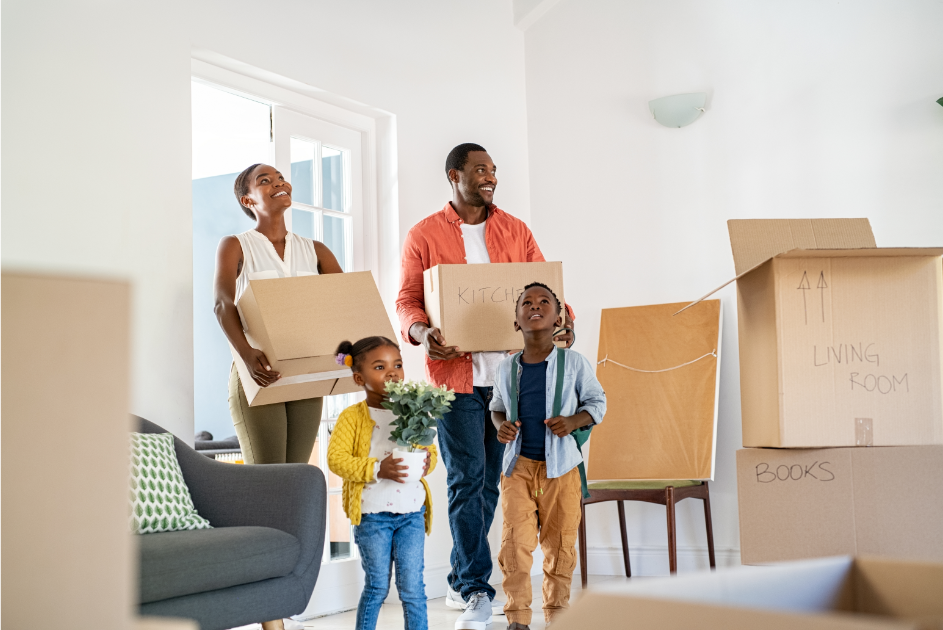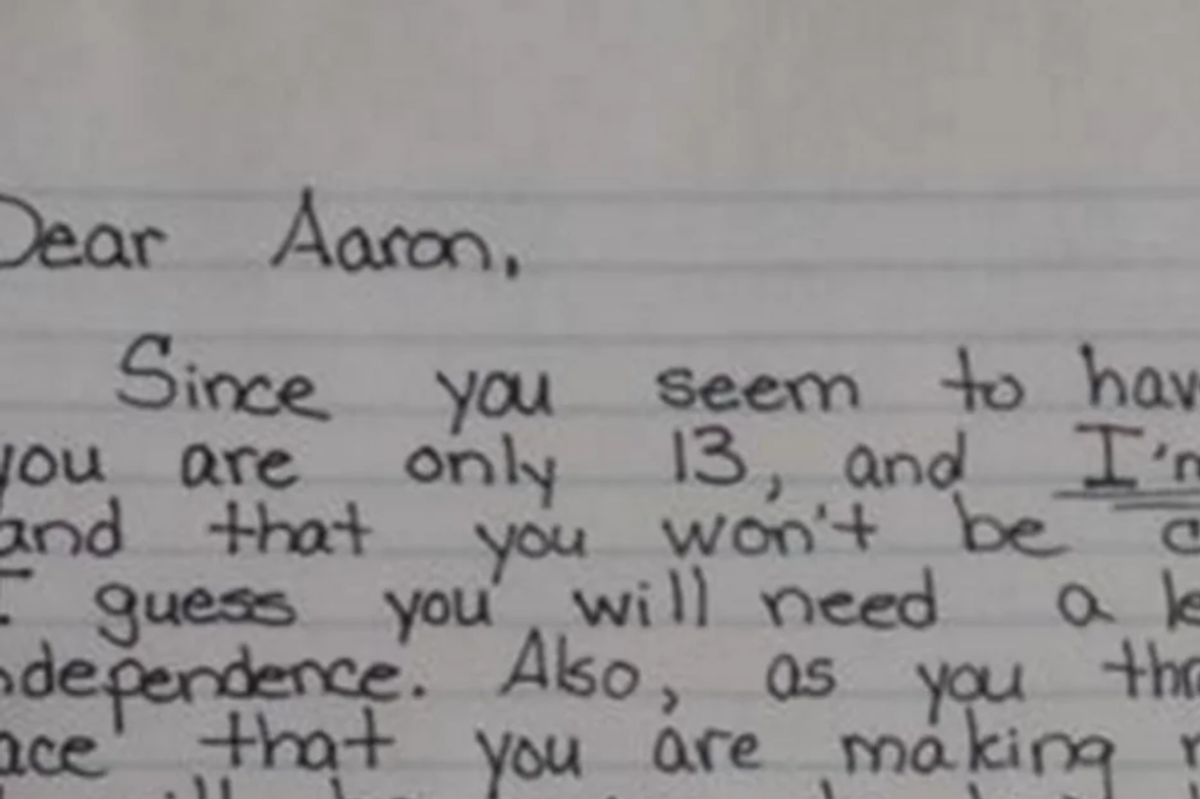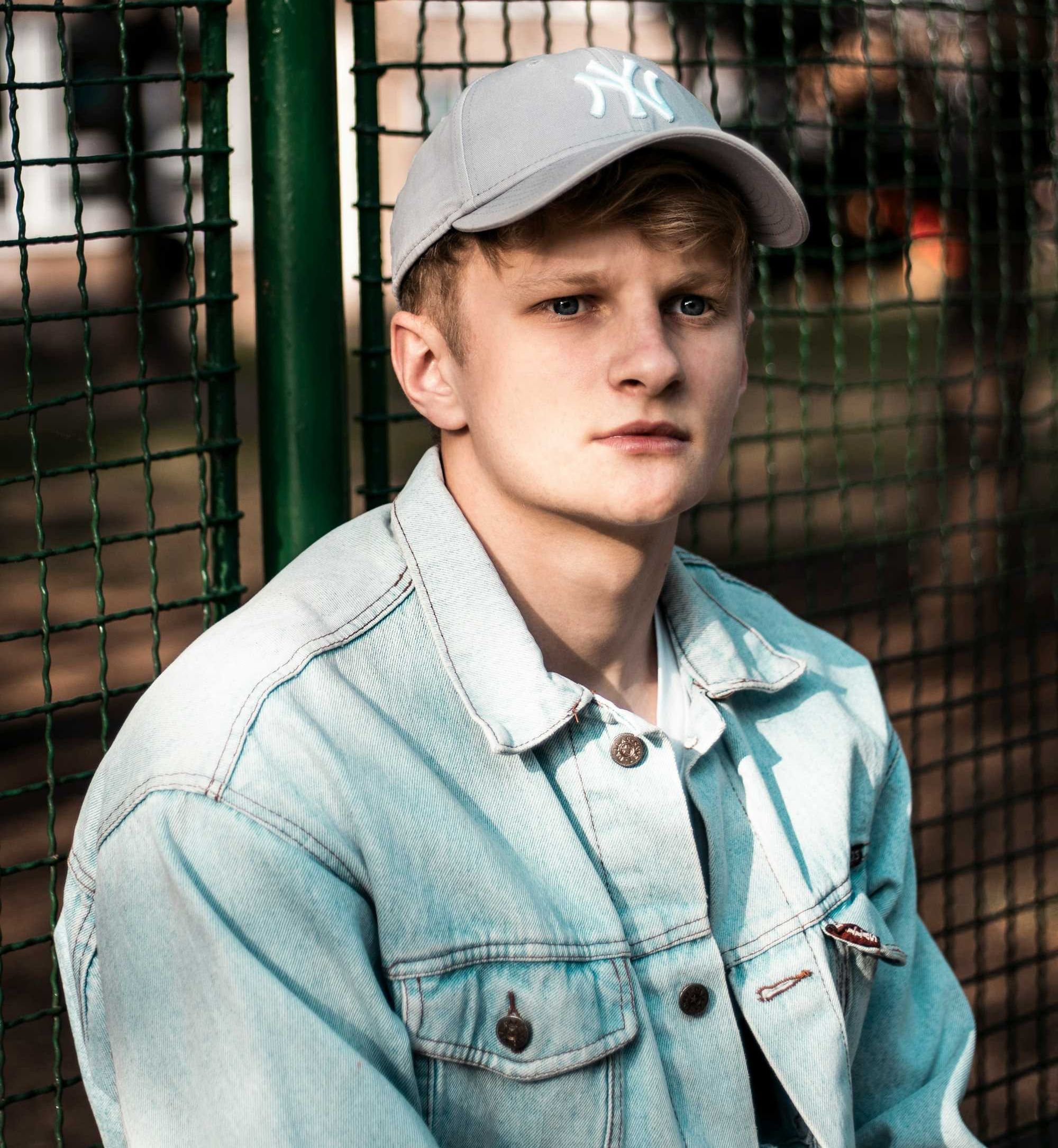A day in the life after you've been kicked out for being LGBTQ.
Youth homelessness is an epidemic, especially for young LGBTQ people. Here are three of their stories.
Image by Michael Calcagno/Upworthy.
As darkness blanketed New York City, Skye Adrian sat alone outside his parents' apartment, devastated and left with very few options.
He had a feeling it could come to this, he tells me. His parents had warned him he better start looking for another place to stay, after all. Still, nothing quite prepares you for the moment your parents kick you out because you’re gay.
"I had nowhere to go," recalls the now 21-year-old of that spring night in 2015. An immigrant from Jamaica, Adrian had just moved to New York and had nowhere to turn. "I didn't know anybody. I'm not from here."
Queer youth homelessness remains at crisis levels in the United States. Research suggests up to 40% of all youth who are homeless identify as LGBTQ, with a disproportionate number of them being transgender and people of color. That’s an alarmingly high figure, considering just about 9% of all youth identify as LGBTQ.
Why are so many young LGBTQ people homeless? The heartbreaking reason, advocates say, is that many are rejected by parents who seem to think it's more acceptable for their children to sleep on the street than to be gay.
For kids like Adrian, once the sun goes down, safe options are few and far between.
You might be able to couch-surf at friends’ houses for a while — like Adrian ended up doing — but that’s no permanent solution. If you’re lucky, you might find a shelter that’s both safe and has an available bed. You might snag a spot on a subway train or a public place like the library, neither of which is ideal. There’s always a sidewalk, of course, a particularly dangerous terrain that leaves you vulnerable to anything from violence to freezing temperatures.
Or there’s the option of "survival sex." As the term suggests, it’s an exchange someone in desperate need makes in order to stay alive. It’s a tactic homeless LGBTQ teens and young people resort to more often than their straight, cisgender peers. For a time, Adrian — who eventually ran out of couches to crash on — began using a hook-up app on his phone to find guys looking for one-night stands and willing to let him stay overnight. The constant stress of finding new partners took a toll on him, though. He was exhausted in more ways than one.
"Of course, if you wanted to stay there, it had to be sex," he tells me. "I got tired of that."
Image by Michael Calcagno/Upworthy.
As the sun came up over Los Angeles, Ashlee Marie Preston knew it would bring another exhausting day simply trying to survive.
As a transgender woman of color living in L.A., Preston found herself relying on meth to keep up. Without a place to call her own, she didn’t see any other way to manage a dizzying way of life that required staying alert and engaged throughout the night, relying on survival sex and keeping up with a group of friends who often resorted to prostitution. It made sense that her sunrises and sunsets eventually began to blur together.
"Here we are, 7 o’clock, 8 o’clock in the morning — I’m nodding off and drinking coffee — then we’d go to the drop-in center to sleep in the chairs," she explains. It was never supposed to be like this, though.
Preston moved to L.A. from Kentucky in 2004. She wanted to live in a safer city, a place more accepting of people like her. But even on the liberal West Coast, Preston underestimated the barriers that would stand in her way.
Being black and trans, finding a job was tough, as it is for many people in her shoes. Even when she’d land one, keeping it proved to be just as difficult. Employers wouldn’t necessarily know she was trans when they hired her, she says. When they found out, things would take a turn — "they would find different reasons to get rid of me," she says.
Unable to find steady employment or a stable living arrangement, she eventually lost all the things she brought with her from Kentucky, including many friends who weren’t accepting of her transition. She was completely devastated.
That feeling of complete loss is what a lot of people don’t understand about homelessness, Preston reveals. It’s not just about losing a physical place, "it's mental, emotional, and spiritual displacement," too, she says. "I felt like I had nowhere to be in the world."
That’s when she would end up at the drop-in center, trying to get some shut-eye as the rest of the city began a regular morning.
She'd wake up in a chair, hopefully be able to take a shower, and do whatever she could before the space would close its doors on her again. Often, she couldn’t find a shelter that would accept her overnight — men's shelters cited safety liabilities, and women's shelters argued that the fact that she'd been assigned male at birth disqualified her from taking one of the beds. It’s a dilemma that's all too common for homeless trans people.
Regardless of the reason, the end result was always the same: Preston and her friends would be back out on the streets just trying to make it through another day. "We had to do it all over again," she says of the exhausting cycle. "It was like rinse and repeat."
Image by Michael Calcagno/Upworthy.
It’s a chaotic day in Manhattan when Giovanni Lamour picks up their phone.
Lamour, who is genderqueer and uses they/them pronouns, quickly apologizes to me for the background noise (an ambulance siren is blaring and kids are screaming nearby), but they’re happy to discuss their difficult past, even during a busy afternoon on-the-go while preparing for their future.
Their life might not seem like most other 24-year-olds’ at the moment — Lamour is living in an emergency housing facility in Queens when we chat — but they’re putting all the pieces together to get there.
Lamour, who grew up in Spanish Harlem, had just come from a clinic visit to make sure they’re staying on top of their health. HIV and hepatitis C testing is just one of many services provided by the Ali Forney Center, a nonprofit committed to helping homeless LGBTQ youth. Lamour has received counseling and college preparation help, benefited from the center’s housing programs, and worked on their job readiness skills (like résumé-writing), all courtesy of Ali Forney.
"I always want to learn something new and problem-solve," they explain. "Where there’s a will, there’s a way."
After Lamour's mother died when they were just 15 years old, they went to live with their father. Their relationship with their dad "really wasn’t the best," they say, admitting they’re in part to blame for a handful of rebellious teen years. But still, Lamour vividly remembers their father’s habit of locking them out of the apartment on summer nights. Feeling unwanted was painfully normal in Lamour's house.
In the decade or so since Lamour’s mother passed away, a series of strained and complicated relationships — with their dad, uncle, friends, and significant others — gradually fell apart. With nowhere else to go, Lamour became homeless. "It’s entirely depressing," Lamour says of their blood relatives, whose intolerance forced them to create a new family. “I’ve really, like, chosen my family — my friends around the city."
Image by Michael Calcagno/Upworthy.
As the sun slowly drops in the sky and families settle into their living rooms across the country, thousands of young, homeless LGBTQ people are left wondering.
They wonder if they’ll eat dinner. They wonder where they’ll rest their heads once the sun disappears. They wonder if the future has any room for them in it.
While many homeless LGBTQ youth struggle in a continuous loop of basic survival, some — like Adrian, Preston, and Lamour — get the help they need and are able to find their way out. "The struggle that you’re going through is real," Lamour wants those young people to know. "It’s real, it’s common, and there’s help there for you."
Today, Lamour is one of Ali Forney’s youth advocates, working to draw more attention to the crisis of LGBTQ youth homelessness. They helped the nonprofit prep for a queer youth summit, for instance, and are leading the charge on various new projects to further Ali Forney’s mission. They’re determined to get back into school someday to prepare for a future in public advocacy. They dream of studying abroad.
Last fall, Adrian, who is living in transitional housing, also began working with Ali Forney. He’s helped the center on various initiatives, like an HIV prevention campaign and the fight to get more shelter beds for young LGBTQ people.
"I want to be a beacon of hope for all LGBT youth," Adrian explains, noting he’s focusing more on helping other young, queer immigrants like himself who’ve experienced similar struggles. "Regardless of you being homeless, you can still do what you need to get done."
And Preston? One day, she decided she deserved better, and she hasn’t looked back since.
"I remember thinking, 'You know what? I don't know what the plan is — I don't know what God, the universe, whatever, has in store for me,'" she says. "But I know it's no mistake that I'm still here."
The day we talk, Preston is prepping for a meeting at Facebook’s headquarters in San Francisco. Now she’s a media advocate and diversity speaker, focused on elevating the conversations around youth homelessness.
Adrian, Preston, and Lamour aren’t just overcoming their own battles — they’re fighting to save more young lives along the way.
Each and every LGBTQ kid should know they’re loved, after all.
They deserve to wake up to a better tomorrow.
To learn more and help fight LGBTQ youth homelessness, support organizations on the front lines of the crisis, like the Ali Forney Center, the Happy Hippie Foundation, and My Friend's Place.
- After seeing his son putting on makeup, this dad has the most heartwarming reaction ›
- A kid describes what it's like growing up with two dads on tiktok - Upworthy ›
- Jewish summer camp opens for trans kids. The camp was filled within weeks. - Upworthy ›
- There's a new summer camp designed for LGBTQ+ kids and it was filled within weeks - Upworthy ›
- Teacher berates young boy for having two dads. Then three female classmates stood up. - Upworthy ›




 Family moving into a new home.
Family moving into a new home.  Driving Road Trip GIF by Rosen Hotels & Resorts
Driving Road Trip GIF by Rosen Hotels & Resorts 
 Baby boomers are a fascinating and endearing group.
Baby boomers are a fascinating and endearing group.  An average boomer's basement. Photo by
An average boomer's basement. Photo by  They love to scare their adult children with dramatic texts.
They love to scare their adult children with dramatic texts.  Boomers love to talk about random people who have died, and large-scale tragedies.
Boomers love to talk about random people who have died, and large-scale tragedies.  Boomers love staying at home for no good reason.
Boomers love staying at home for no good reason.  If it can't be held in their hand, they don't trust it.
If it can't be held in their hand, they don't trust it.  They'll keep food for way, way too long.
They'll keep food for way, way too long.  They still hold onto outdated gender stereotypes. Photo by
They still hold onto outdated gender stereotypes. Photo by  This is the generation that invented TV as background noise.
This is the generation that invented TV as background noise.  They love intensely tracking a thunderstorm via The Weather Channel
They love intensely tracking a thunderstorm via The Weather Channel 
 "
"
 Teaching teenagers about real-life consequences isn't easy. Photo by
Teaching teenagers about real-life consequences isn't easy. Photo by  Kids need to be reminded, sometimes, of how much they still depend on mom. Photo by
Kids need to be reminded, sometimes, of how much they still depend on mom. Photo by